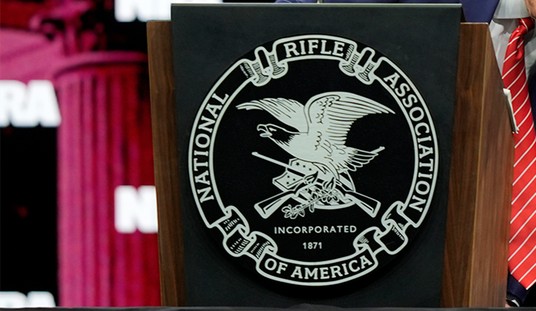Did you know that both handguns and the calibers preferred by criminals are getting bigger?
Not only are guns getting bigger, they’re getting into the hands of more criminals, according to a recent investigation by The Trace, with deadly effect.
While all bullets could kill if they hit vital organs, arteries, or the head, experts told The Trace that the bigger the bullet, the more likely any wound will be fatal. Bullets are measured in calibers, or the diameter of their width, in fractions of an inch or millimeter.
In the past 20 years, higher demand from law-abiding citizens and criminals, both claiming concern about self-protection, has led gun manufacturers to make more of these deadlier guns. Legal and illegal citizen buyers alike are scooping up higher-caliber pistols like those originally designed for police from the civilian market and illegal gun runners. As a result, guns with higher caliber bullets are showing up at more crime scenes, leading experts to expect the lethality rate of gun violence to rise, too.
“Demand is shifting because supply is shifting,” SUNY-Albany sociologist David Hureau told The Trace. “Bigger, badder guns are just more available on the secondary market.”
This is a stark change from just 50 years ago, when the criminal’s gun of choice–dubbed the “Saturday Night Special”–was smaller and cheaper. Since then, gun companies have marketed bigger, higher-caliber weapons like 9mm, .40, and .45 caliber pistols as adequate for keeping average citizens concerned about self-defense—”citizen protectors,” as one sociologist called them—safe.

As someone with pretty good connections in the firearms industry, this “news” comes as a surprise to me… primarily because it’s mostly fiction, or at best, a gross misunderstanding of data.
Let’s look at some history, shall we?
9mm firearms aren’t new. They were introduced in 1902, 114 years ago. The .45 ACP was created in 1904, just two years later. The .380 ACP came in 1908. All three calibers been in widespread usage ever since their creation prior to the War to End all Wars.
These common calibers all predate the first documented use of the term “Saturday Night Special” by six decades. These so-called “Saturday Night Specials” were also banned from import in 1968. Yes, these handguns—mostly in .25 ACP, .32 ACP, and .380 ACP calibers among semi-automatics, and .38 Special in revolvers—haven’t been a big deal for almost half a century.
Likewise, the “larger” .357 SIG and .40 S&W calibers originally designed for law enforcement in the early 1990s, are already on the decline.
Science has given us 9mm bullets that perform just as well, and sometimes more consistently, across a wide range of intermediate barriers than the .357 SIG and .40 S&W bullets. This comes while 9mm has the significant advantage over both cartridges in having less snappy, more manageable recoil for faster follow-up shots. 9mm is also a significantly lower pressure round, causing less wear and a longer service life for the guns themselves. Did I mention that 9mm pistols also have considerably have higher capacity per magazine in the same-sized gun in .357 SIG or .40 S&W?
These same advances in bullet design have breathed new life into the .380 ACP, once considered a marginal caliber, now increasingly viewed by many experts as a viable self-defense caliber.
Far from becoming “more popular” as these anti-gun “experts” claim these larger, more powerful cartridges developed for law enforcement are on a steady and rapid decline among law enforcement agencies and civilians shooters as well. It is in the these 100+ year-old smaller calibers—particularly the .380 ACP and 9mm—where we’re seeing the demand grow as larger caliber bullets and the guns that fire them are declining in market demand.
So where are these “experts” getting their information? Frankly, they’re getting them from history.
The average time to crime for a firearm is 10.88 years. While the crime may have been committed last week or last year, the average firearm in question entered the market more than a decade ago, and many of them are decades older than that by the time they enter the criminal market.
We’re not seeing “bigger guns” or “larger, deadlier bullets.”
What we’re seeing is the century old cartridges have stood the test of time staying around, while less effective and efficient cartridges both old and new are becoming increasingly obsolete, dropping out of the primary market into secondary markets (including criminal markets), on their way to obsolescence.








Join the conversation as a VIP Member